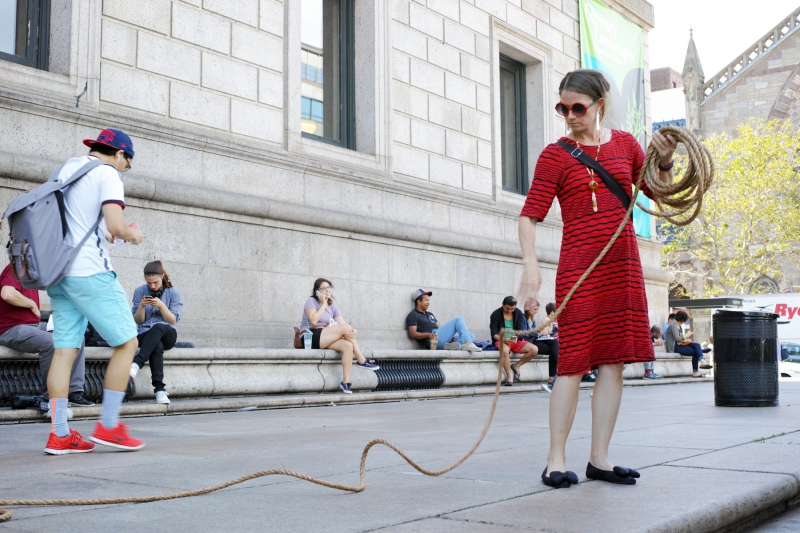With Fellowship, D’Ignazio to “Interrogate Power” in Data Visualization

For decades, data have been considered the sine qua non of research and knowledge in the sciences and social sciences. And for decades, the collection, visualization and presentation of that data has been dominated by one group: men.
Assistant Professor of Civic Media and Data Visualization and Emerson Engagement Lab Fellow Catherine D’Ignazio is interested in how feminist thought can be combined with data visualization to tell stories differently and challenge the way we think about data as cold, hard, empirical facts.
She and Lauren Klein, a colleague from Georgia Institute of Technology, were recently awarded one of eight Collaborative Research Fellowships from the American Council of Learned Societies, allowing them to work on Data Feminism, which will become a book published by MIT Press.
“Data at this current moment in time has become a currency of power,” D’Ignazio said, “and right now, people in general are regarding data as a prized way of knowing the world and making decisions in the world. That’s what makes it really interesting to combine with feminism, because feminism has a way of interrogating power.”
The fellowship will allow D’Ignazio and Klein to take a sabbatical from teaching in 2019 and focus on their research, which has its seeds in a couple of blog posts the women wrote in 2015.
D’Ignazio wrote a post titled “What Would Feminist Data Visualization Look Like?” for the MIT Center for Civic Media, where she is a research affiliate.
A few people recommended she look up Klein, who had written a similar blog post about data visualization by women in history. An example Klein gave was 19th-century educator Elizabeth Peabody, who used a large quilt to teach students world history.
“It was a little less abstract view from above, and a little more embedded in social relationships [than traditional data visualization],” D’Ignazio said. “[Students] were meant to stand around it and talk about it.”
The two connected, and Klein invited D’Ignazio down to Georgia Tech to take part in a design hack-a-thon she was organizing, and they collaborated on a short paper. Now, they’re digging deeper.
Data feminism offers a way of presenting data that “demystifies” and tends to humanize it.
A few years ago, D’Ignazio created a walking data feminism project, “Boston Coastline: Future Past.” Working with a performance artist, she led a group on a “tour” of where Boston’s shoreline could be after climate change and rising seas claim a great deal of the present-day city. The participants walked through the streets of the Back Bay with a rope that denoted the new edge of land.
In another example, design firm Periscopic created on animated online graphic that frames gun deaths in terms of “stolen years,” completely upending the belief that data is, or should be, dispassionate.
“Just like all other forms of communication, communication with data should acknowledge all the different ways people like to be engaged,” she said. “[The gun deaths graphic] represents that engagement with emotion to make its point.”
People tend to look at data and think, if it’s collected in a spreadsheet, it must be true, D’Ignazio said, not realizing all the subjective, human factors that went into that spreadsheet. Someone decided how to collect the data, someone decided how to prioritize the data, someone decided which data to collect in the first place.
Data feminism acknowledges these human elements, she said.
“[It asks] how do we bring more ethical and inclusive practices into data analysis, data science, and data communication?” she said.
Categories